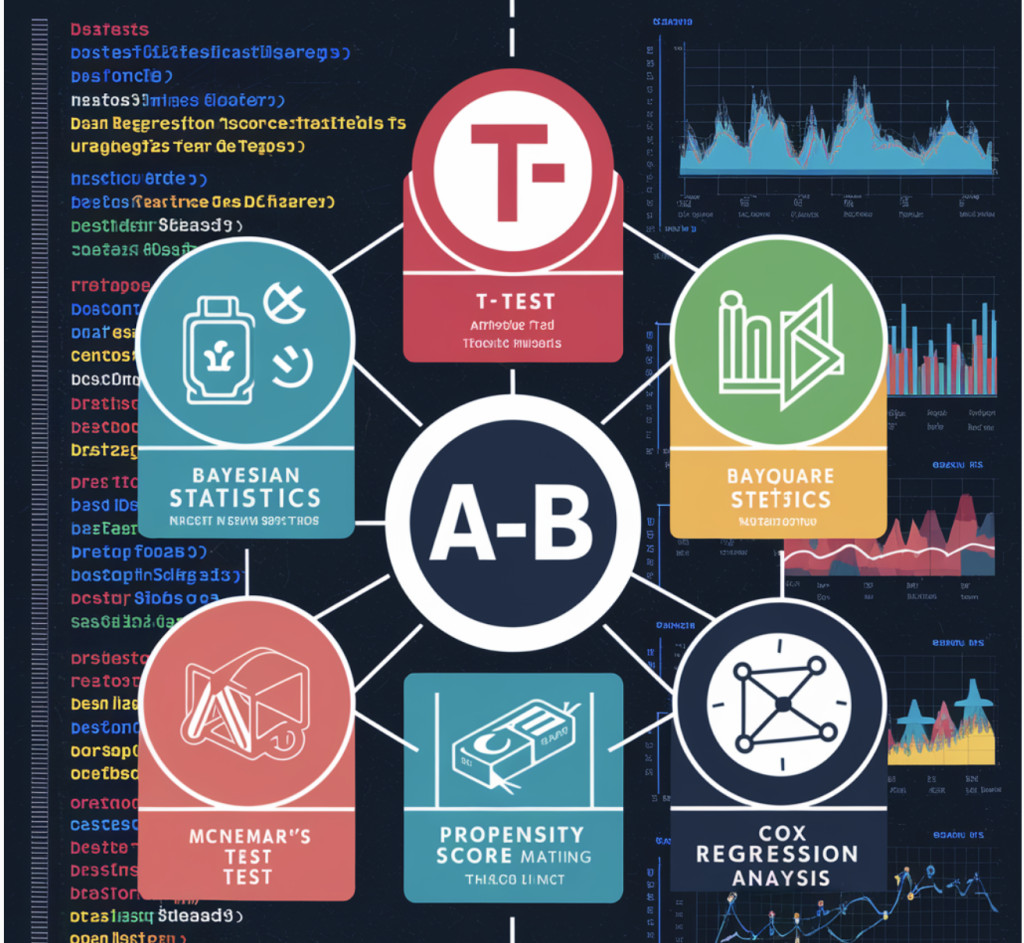A/B testing is a cornerstone of data science, essential for making informed business decisions and optimizing customer revenue. Here, we delve into six widely used statistical methods in A/B testing, explaining their purposes and appropriate contexts.
1. Z-Test (Standard Score Test):
When to Use: This method is ideal for large sample sizes (typically over 30) when the population variance is known.
Purpose: Compares the means of two groups to determine if they are statistically different.
Applications: This technique is frequently employed in conversion rate optimization and click-through rate analysis. It helps identify whether changes in website elements or marketing strategies significantly impact user behavior.
2. T-Test (Student’s T-Test):
When to Use: This method is best for smaller sample sizes (less than 30) when the population variance is unknown.
Purpose: Similar to the Z-test, it compares the means of two groups to identify significant differences.
Applications: This technique is useful in scenarios with limited data points, ensuring robust conclusions despite smaller datasets. It is commonly used in preliminary studies or pilot tests where data collection is constrained.
3. Welch’s T-Test:
When to Use: This is applicable when two groups have unequal variances and/or unequal sample sizes, which is a frequent occurrence in real-world data.
Purpose: An adaptation of the Student’s t-test that accounts for differences in variances between groups.
Applications: It is effective in handling real-world data where assumptions of equal variance do not hold. It provides a more reliable test for heterogeneous data conditions typical in diverse user groups.
4. Mann-Whitney U Test:
When to Use: Non-parametric alternative to the T-test; used when data does not follow a normal distribution.
Purpose: Evaluate the differences between two groups for ordinal or continuous variables that do not follow a normal distribution.
Applications: It is suitable for analyzing skewed data or data with outliers, such as user satisfaction ratings or non-normally distributed financial metrics.
5. Fisher’s Exact Test:
When to Use: Preferred for small sample sizes, particularly in 2×2 tables.
Purpose: Examines the significance of the association between two types of classifications.
Applications: Ideal for scenarios with very limited data, such as early-stage clinical trials or niche market segments. It provides accurate results even with small sample sizes, ensuring robust insights from minimal data.
6. Pearson’s Chi-Squared (χ²) Test:
When to Use: Primarily used for categorical data in a contingency table format (e.g., 2×2 table).
Purpose: Compares two or more groups regarding a categorical variable (e.g., pass/fail, click/no-click).
Applications: This technique is widely used in market research and user behavior studies to analyze categorical outcomes. It helps understand the impact of categorical factors like gender, age group, or geographic location on user actions.
Conclusion:
These six statistical methods are essential tools in A/B testing, each suited to different data types and research scenarios. Understanding when and how to use these tests ensures accurate and actionable results, driving better business decisions and optimizing performance.
Next Steps:
Applying these statistical methods effectively within your business context can significantly enhance your data-driven decision-making process. You can improve customer engagement, optimize strategies, and drive revenue growth by leveraging.
The post 6 Statistical Methods for A/B Testing in Data Science and Data Analysis appeared first on MarkTechPost.
Source: Read MoreÂ

